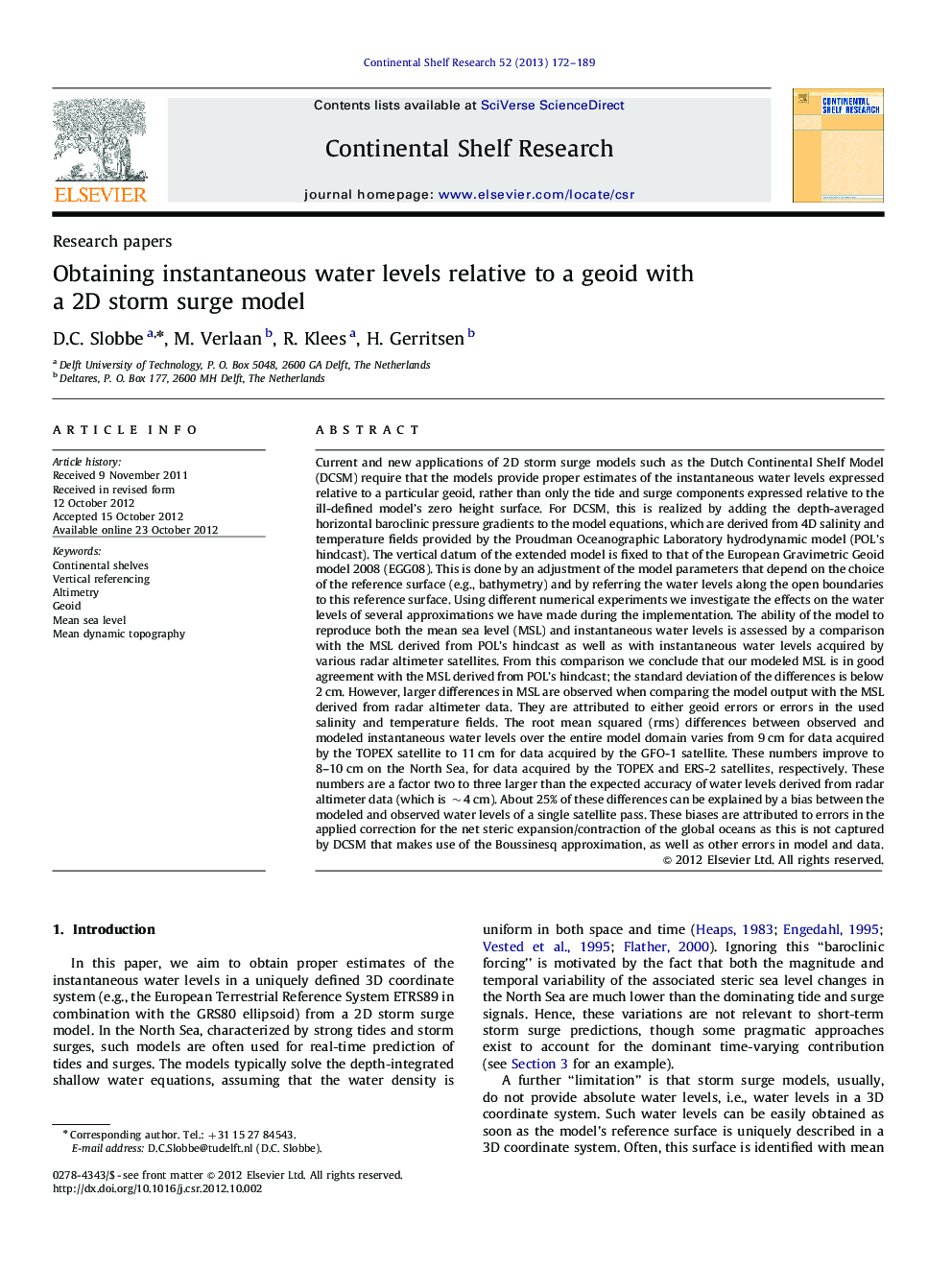| کد مقاله | کد نشریه | سال انتشار | مقاله انگلیسی | نسخه تمام متن |
|---|---|---|---|---|
| 4532295 | 1626159 | 2013 | 18 صفحه PDF | دانلود رایگان |

Current and new applications of 2D storm surge models such as the Dutch Continental Shelf Model (DCSM) require that the models provide proper estimates of the instantaneous water levels expressed relative to a particular geoid, rather than only the tide and surge components expressed relative to the ill-defined model's zero height surface. For DCSM, this is realized by adding the depth-averaged horizontal baroclinic pressure gradients to the model equations, which are derived from 4D salinity and temperature fields provided by the Proudman Oceanographic Laboratory hydrodynamic model (POL's hindcast). The vertical datum of the extended model is fixed to that of the European Gravimetric Geoid model 2008 (EGG08). This is done by an adjustment of the model parameters that depend on the choice of the reference surface (e.g., bathymetry) and by referring the water levels along the open boundaries to this reference surface. Using different numerical experiments we investigate the effects on the water levels of several approximations we have made during the implementation. The ability of the model to reproduce both the mean sea level (MSL) and instantaneous water levels is assessed by a comparison with the MSL derived from POL's hindcast as well as with instantaneous water levels acquired by various radar altimeter satellites. From this comparison we conclude that our modeled MSL is in good agreement with the MSL derived from POL's hindcast; the standard deviation of the differences is below 2 cm. However, larger differences in MSL are observed when comparing the model output with the MSL derived from radar altimeter data. They are attributed to either geoid errors or errors in the used salinity and temperature fields. The root mean squared (rms) differences between observed and modeled instantaneous water levels over the entire model domain varies from 9 cm for data acquired by the TOPEX satellite to 11 cm for data acquired by the GFO-1 satellite. These numbers improve to 8–10 cm on the North Sea, for data acquired by the TOPEX and ERS-2 satellites, respectively. These numbers are a factor two to three larger than the expected accuracy of water levels derived from radar altimeter data (which is ∼4cm). About 25% of these differences can be explained by a bias between the modeled and observed water levels of a single satellite pass. These biases are attributed to errors in the applied correction for the net steric expansion/contraction of the global oceans as this is not captured by DCSM that makes use of the Boussinesq approximation, as well as other errors in model and data.
► We present a simple method to include the water density gradient forcing in the 2D Dutch Continental Shelf Model.
► For the first time a methodology for the vertical referencing of a shallow-water hydrodynamic model is presented.
► A comparison of the model output in terms of mean sea level provides good agreements.
► A detailed comparison of the model output with observed dynamic sea surface topography is presented.
► First time, it has been shown that the impact of an improved geoid on modeled water levels inside the model domain is limited.
Journal: Continental Shelf Research - Volume 52, 1 January 2013, Pages 172–189